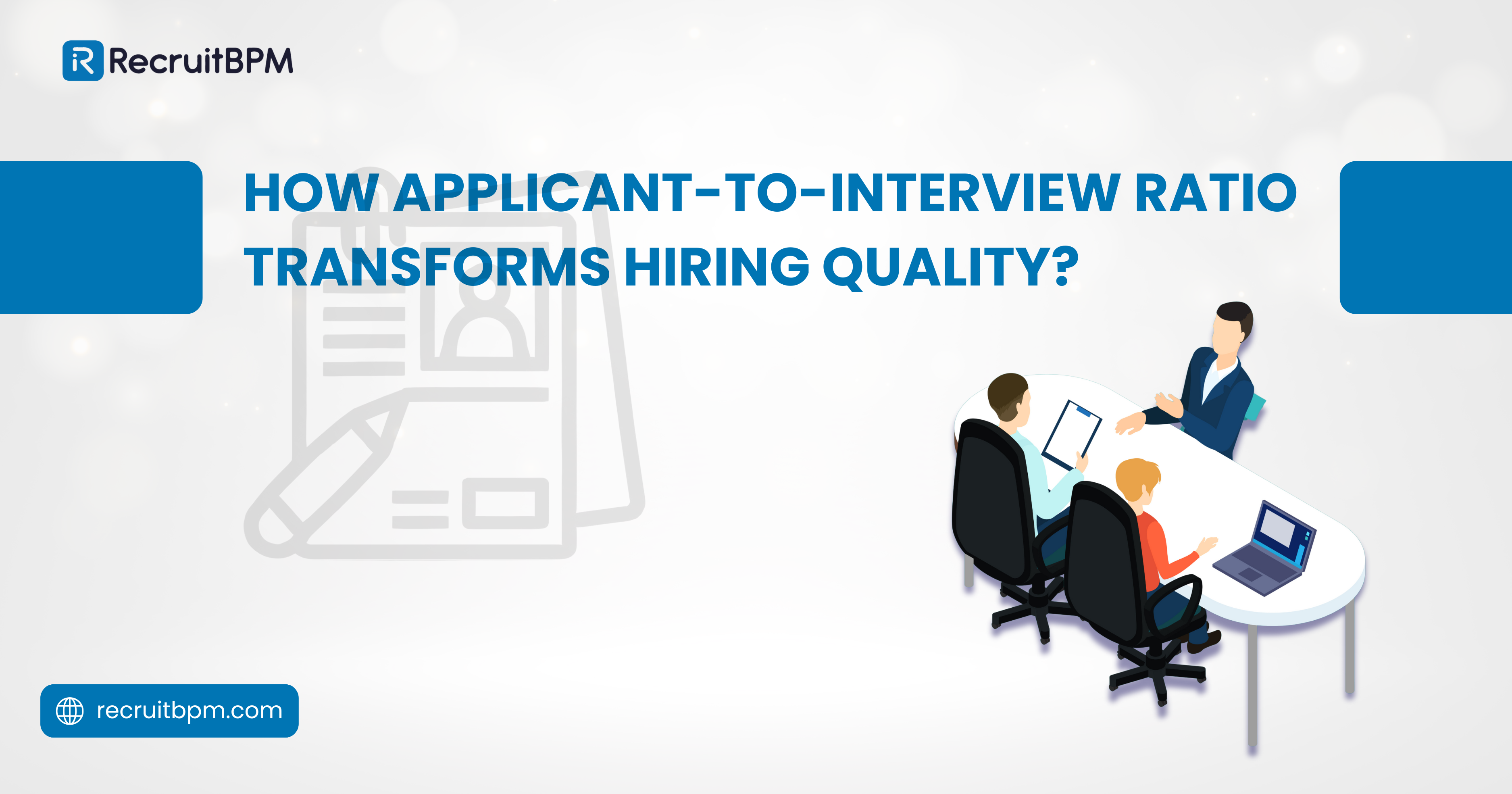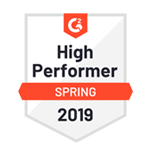Recruitment agencies drowning in applications while struggling to find qualified candidates face a fundamental screening problem. Volume doesn’t equal quality, and the gap between applications received and interviews conducted reveals critical insights about recruitment effectiveness.
Understanding your applicant-to-interview ratio transforms recruitment from guesswork into science. This metric exposes screening efficiency, job description quality, and sourcing effectiveness—providing the data recruitment agencies need to optimize every stage of talent acquisition.
What is the Applicant-to-Interview Ratio?
The applicant-to-interview ratio measures the percentage of applicants who advance to the interview stage of your recruitment process. It’s calculated by dividing the number of candidates invited to interview by the total number of applicants, then multiplying by 100 to express the result as a percentage.
For example, if a job posting receives 200 applications and 10 candidates are invited to interview, the applicant-to-interview ratio is 5% (10 ÷ 200 × 100 = 5%). This means that only 5 out of every 100 applicants meet the basic qualifications necessary to warrant an interview.
Current industry benchmarks show that the applicant-to-interview ratio in 2024 was 3%, meaning that on average, for every 100 applicants a job posting received, only 3 were invited to interview. This relatively low percentage often signals unqualified candidate pools or ineffective screening processes.
The metric differs from the interview-to-hire ratio, which measures candidates who receive offers after interviewing. Applicant-to-interview ratio specifically evaluates front-end screening effectiveness—your ability to identify qualified candidates from initial application pools.
This ratio serves as a quality indicator for your entire recruitment funnel. Low ratios suggest problems with job descriptions attracting unqualified applicants, ineffective sourcing channels, or overly lenient screening criteria. High ratios might indicate excellent targeting but could also suggest screening that’s too restrictive, potentially missing strong candidates.
Why Applicant-to-Interview Ratio Matters for Recruitment Agencies?
Tracking the applicant-to-interview ratio provides recruitment agencies with actionable intelligence that directly impacts efficiency, cost-effectiveness, and client satisfaction.
Screening efficiency becomes measurable
Without ratio tracking, recruitment agencies can’t determine whether their screening processes work effectively. The metric quantifies what percentage of applicants warrant deeper evaluation, revealing whether you’re efficiently filtering candidates or wasting time reviewing unqualified profiles.
Resource allocation improves dramatically
Recruitment teams possess limited time for interviews. Understanding how many applications typically yield one interview candidate allows strategic capacity planning. If your ratio sits at 3%, you know that 100 applications require sufficient screening capacity to identify and schedule 3 interviews.
Job description quality receives objective feedback
Consistently low ratios across multiple positions suggest job descriptions attract the wrong candidates. Either requirements aren’t clear, titles mislead applicants, or compensation expectations don’t align with market realities. The metric flags these issues before they become chronic problems.
Sourcing effectiveness becomes visible
Different sourcing channels produce different applicant-to-interview ratios. Job boards might generate high application volume with low qualification rates, while employee referrals typically yield higher ratios. Tracking ratios by source reveals which channels deliver quality versus quantity.
Cost-per-hire optimization requires ratio insights
Screening unqualified candidates wastes recruiter time—your most expensive resource. Using metrics for these ratios helps teams work on specific areas to improve screening and interviewing processes, potentially saving thousands of dollars on each employee hired. Better ratios mean recruiters spend time on qualified candidates rather than sorting through irrelevant applications.
Client expectations benefit from data transparency
Recruitment agencies can set realistic timeline expectations with clients based on historical ratios. If a position type typically shows 2% applicant-to-interview ratio, you know that 50 quality applications are needed to generate one interview candidate, informing sourcing strategy and timeline projections.
Recruitment planning becomes data-driven
These ratios are key in recruitment planning, forecasting, and budgeting. Understanding typical ratios allows accurate forecasting of required application volume to meet hiring targets, justifying technology investments that improve screening efficiency.
Competitive positioning strengthens with efficiency
Recent data shows hiring teams now conduct 42% more interviews per hire than in 2021 (20 versus 14), contributing to a 24% increase in average time to hire (41 versus 33 days). Agencies that maintain healthy applicant-to-interview ratios avoid this inefficiency trap, delivering faster placements than competitors drowning in unqualified candidates.
How to Use Applicant-to-Interview Ratio Effectively?
Maximizing the value of applicant-to-interview ratio tracking requires systematic measurement, analysis, and continuous optimization based on insights gained.
Establish baseline metrics across positions
Track ratios separately for different role types, seniority levels, and industries. Entry-level positions typically generate higher application volumes with lower ratios, while specialized roles attract fewer but more qualified applicants. Understanding these patterns prevents false comparisons.
Monitor ratio trends over time
Single ratio measurements provide snapshots; trends reveal patterns. Declining ratios signal growing problems—perhaps job descriptions need updating, the employer brand has weakened, or screening criteria have become too lenient. Improving trends validate optimization efforts.
Compare ratios across sourcing channels
Calculate separate ratios for applications from job boards, LinkedIn, employee referrals, recruitment marketing campaigns, and direct sourcing. This analysis identifies which channels deliver qualified candidates versus those generating empty volume. Shift resources toward high-ratio sources.
Correlate ratios with quality-of-hire metrics
The ultimate validation comes from tracking whether candidates with specific ratio profiles become successful hires. If positions with 8% ratios produce better long-term employees than those with 3% ratios, your screening effectively identifies top talent.
Set target ratios based on role complexity
Simple positions with clear requirements should achieve higher ratios—perhaps 8-10%. Complex roles requiring rare skill combinations might target 3-5%. Unrealistic expectations in either direction create problems. Too high suggests you’re missing qualified candidates; too low indicates screening inefficiency.
Implement progressive screening stages
Improving early screening processes by adding screening questions to applications can drastically improve the quality of candidates. Use knockout questions, skills assessments, and automated pre-screening to filter obvious mismatches before human review.
Optimize job descriptions continuously
Low ratios often trace to poor job descriptions. Ensure titles accurately reflect roles, requirements are clear and realistic, and compensation ranges align with market rates. Test description variations and track resulting ratio changes.
Leverage technology for initial filtering
Applicant tracking systems with AI-powered screening can parse resumes, match qualifications against requirements, and rank candidates automatically. This technology improves ratios by surfacing qualified candidates buried in application volume.
Balance ratio optimization with diversity goals
Overly aggressive screening can inadvertently exclude qualified diverse candidates whose backgrounds don’t match traditional patterns. Monitor demographic data alongside ratios to ensure efficient screening doesn’t compromise diversity objectives.
Use ratios for interviewer training
Share ratio data with hiring managers to calibrate expectations. If historical ratios sit at 4%, managers should understand that 25 applications typically yield one interview candidate, tempering unrealistic demands for perfect candidates.
Common Challenges with Applicant-to-Interview Ratio
Despite its value, applicant-to-interview ratio tracking and optimization present distinct challenges that recruitment agencies must navigate carefully.
Benchmark interpretation proves difficult
The 3% industry average provides general guidance, but optimal ratios vary significantly by industry, role complexity, seniority level, and market conditions. Comparing your 5% ratio against a 3% benchmark without context can lead to incorrect conclusions about performance.
Volume fluctuations distort ratios
Viral job postings that attract hundreds of unqualified applicants tank ratios temporarily, suggesting problems that don’t actually exist with your screening process. One-off anomalies require contextual interpretation rather than automatic process changes.
Quality versus speed tension emerges
Improving ratios by implementing rigorous screening extends time-to-interview, potentially losing fast-moving candidates to competitors. Finding the right balance between thorough evaluation and speed requires ongoing calibration.
Overly restrictive screening misses strong candidates
Pursuing higher ratios through aggressive filtering can eliminate qualified candidates whose resumes don’t perfectly match keyword criteria. Non-traditional backgrounds, career changers, and diverse candidates often get screened out by overly rigid systems.
ATS limitations create screening gaps
Resume parsing doesn’t always extract information accurately, especially from creatively formatted documents or non-standard career paths. Automated screening dependent on parsed data can miss qualified candidates due to technical limitations rather than actual qualification gaps.
Ratio gaming incentivizes wrong behaviors
If recruiters are evaluated solely on ratios, they might reduce application volume by hiding job postings or narrow descriptions to attract only perfect candidates. These tactics improve ratios artificially while reducing total qualified candidate flow.
Industry-specific challenges vary dramatically
High-volume retail or hospitality recruiting faces fundamentally different ratio challenges than specialized technical recruiting. Generic optimization strategies fail when industry context isn’t considered.
Time lag complicates analysis
Ratios calculated at application closing may not reflect interview outcomes that occur weeks later. Candidates who looked qualified initially sometimes withdraw or fail deeper screening, distorting the apparent quality signal.
Multiple interview stages create confusion
Organizations with phone screens, first interviews, and final interviews must decide which stage defines their applicant-to-interview ratio. Inconsistent definitions make benchmarking and optimization difficult.
Market conditions override internal efforts
Tight labor markets with candidate shortages force lower screening standards to fill positions, tanking ratios regardless of process quality. Conversely, recession-driven application floods can artificially inflate ratios without reflecting screening improvement.

















